Brewing potions in DnD 5E isn’t exactly baked into the core rulebook. By default, crafting is a long and tedious process that takes a lot of effort for little reward.
That said, Xanathar’s Guide to Everything added more interesting and intuitive crafting rules to 5E. Thanks to this helpful ruleset, we have a much better idea of how to create items of all kinds, including potions. So, how do we use potion crafting to our advantage? With our DM’s permission, let’s dig in.
We will be using the variant crafting rule from Xanathar’s Guide to Everything for this guide. Those crafting rules are comprehensive and won’t have you whiling away at a Potion of Healing for ten days. These rules are not universal, so be sure to talk to your DM about letting them in.
How potion brewing works in DnD 5E

According to Xanathar’s Guide to Everything, brewing a potion takes a number of workweeks, based on the rarity of the potion in question. It also costs between 25 and 100,000 gp based on how strong the potion is.
When crafting an item, Xanathar’s Guide to Everything refers to a concept called “workweeks.” This simply means how many 40 hour, five day weeks you must spend making an item. If it takes “days” to craft an item, this means you can make it over the course of several eight-hour days.
You do not need to be in constant contact with your crafted item—like you’d need to be to attune to a magical item—in order to make it. You could start making a potion and come back to it after an adventure. That said, taking too long to create an item can come with complications.
You also can’t necessarily craft anything you want at any time. You first need to be proficient in the tools required to craft the item. You rarely, if ever, have to roll to craft (sorry, Artificers), but you do require proficiency to craft the item at all.
In addition, your DM needs to agree that you could realistically find the materials and goods for an item. For instance, if you’re trying to brew a Potion of Giant Size—a Legendary-quality item—your DM might have you roll checks to gather ingredients or straight-up say that you don’t have access to the goods necessary for the item.
Multiple crafters can help make the same item, cutting the time down significantly. For each additional crafter, you can divide the time by the number of people brewing the potion. This is especially useful later on, since it takes nearly six months to make an endgame potion.
Level limits for high-level potions
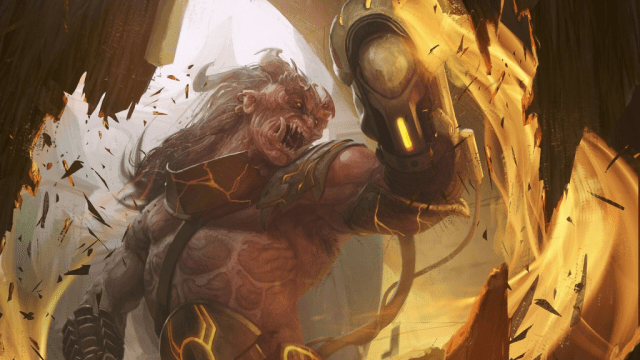
In order to brew most potions, you must find the recipe and any exotic ingredients first. These can be as simple-to-get as buying them from a store or part of an entire adventure arc. This is not the case for Potions of Healing or Scrolls.
The DM is the final arbiter for how difficult it is to find a recipe for a potion or other magical item. As potions are consumable, their recipes and ingredients both tend to be less difficult to find.
As a DM, if you’re wondering about level ranges for allowing your party to locate new recipes and ingredients, the following table should be helpful.
| Potion rarity | Level range |
| Common | One to three |
| Uncommon | Four to seven |
| Rare | Eight to 11 |
| Very Rare | 12 to 16 |
| Legendary | 17 to 20 |
The monster that defends the recipe or other pieces of loot should be slightly stronger than the party’s level range. The monster simply defends the recipe or ingredient and it’s up to the party to loot the ingredients, interpret the recipe, and eventually craft the item. Alternatively, players may need to find a high-level ally within these ranges before they can purchase the recipe or exotic ingredients from them.
There are lots of cool potions in DnD 5E that are hard to simply put into a dungeon. Allowing your players to experiment by providing a realistic source of recipes, such as a Wizard’s library, can give certain party members something to do during downtime.
Can I brew any potion?—explained
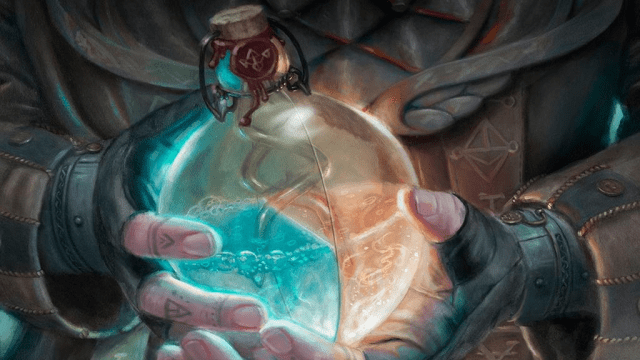
Using the variant Item Crafting rules, you can theoretically brew any potion in the game. Brewing potions is quite difficult, however, and requires many weeks of work to produce a single item.
In almost all cases, you will need the recipe and ingredients for a potion before you can make it. The DM decides whether or not it’ll be trivial to find these, which is usually the case for common or uncommon potions. Depending on your background, you might be better off; for example, a Criminal Rogue might have contacts that can get them the ingredients they need. Once you have the recipe and ingredients, you’re set to go.
Crafting any potion takes time, based on the rarity of the item. An uncommon potion takes longer than a common one, but less time than a rare one. Below are the crafting times for each rarity of potion.
| Potion rarity | Time to craft | Cost |
| Common | Three days | 25 gp |
| Uncommon | One workweek | 100 gp |
| Rare | Five workweeks | 1,000 gp |
| Very Rare | 12 workweeks, three days | 10,000 gp |
| Legendary | 25 workweeks | 50,000 gp |
These times might look a little strange to you. That’s because they’re half of what you’d need to craft a magic item of the same rarity. The prices are slashed in half, too, since potions are consumable and go away after use.
Before you can even begin this process, you’ll need the tools of the trade. Proficiency in Alchemist’s Supplies is a safe bet for all potions, since they have the native equipment to handle almost all potion-making. That said, you can make arguments for different types of potions that let you use other tools. For example, you could make a Potion of Poison Resistance using a Poisoner’s Kit instead of Alchemist’s Supplies. This flexibility should allow more people to craft potions.
You can cut down the time, though not the cost, by including more people in the brewing process. The time corresponds to your effort while the cost corresponds to the price of raw materials and tools, making it non-negotiable.
Healing potions
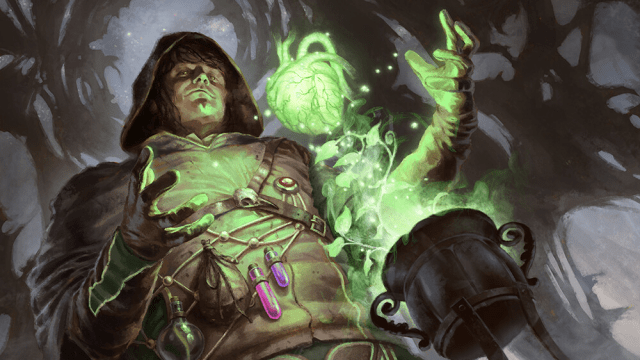
The most common potions to craft are healing potions. Potions of Healing do not cost as much to craft and take significantly less time to produce than any other item that you can create. That said, in order to craft it, you must have proficiency with the Herbalism Kit tool and have one alongside you.
For potions of healing, you can follow this table:
| Item name | Time to craft | Cost |
| Potion of Healing | One day | 25 gp |
| Potion of Greater Healing | One workweek | 100 gp |
| Potion of Superior Healing | Three workweeks | 1,000 gp |
| Potion of Supreme Healing | Four workweeks | 10,000 gp |
These prices and times are significantly less than any other item in Xanathar’s Cauldron of Everything. We recommend that you and your DM use this spread for crafting these, since you should have as many Potions of Healing on your person as you can afford.
Potion brewing without Xanathar’s Guide to Everything
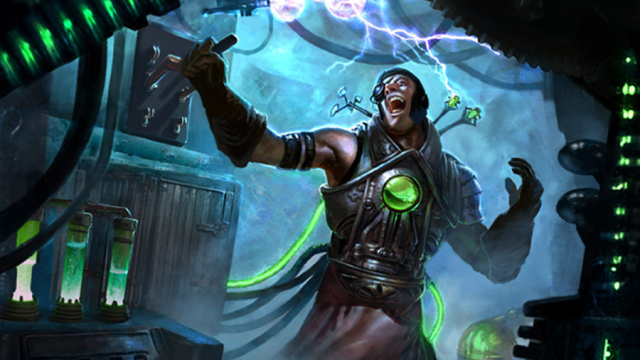
Say that you wish to avoid using additional sourcebooks for potion brewing in 5E. By default, the rules for potion-brewing are slightly different.
You use the following table for the cost and time of crafting an item through the DMG.
| Item rarity | Time | Cost |
| Common | Four days | 100 gp |
| Uncommon | 20 days | 500 gp |
| Rare | 200 days | 5,000 gp |
| Very Rare | 2,000 days | 50,000 gp |
| Legendary | 20,000 days | 500,000 gp |
Yeah, it isn’t exactly the speediest process in the world.
The DM is the final arbiter on price, which also determines the speed by which you craft. A crafter makes 25 gp of a product per day using the default crafting rules for 5E. So, the less expensive the item, the faster it is to craft.
Despite this, the DMG offers no straightforward advice on how to lower the cost of a consumable compared to a magic item. DMs should consider dropping the price by a significant margin, considering it takes players five years to make a Potion of Flying.
Other characters can chip in on the process, both through the price tag and the duration of the project, but that still doesn’t make the crafting process any easier. Three people working together on a Potion of Dragon’s Majesty would take nearly 20 years to do so, which is just too much.
Even if your DM does not own the book, we highly recommend using the Xanathar’s Guide to Everything table for crafting costs and time. The DMG’s crafting rules are totally unrealistic for a human character’s lifespan, let alone the amount of time in a standard campaign.


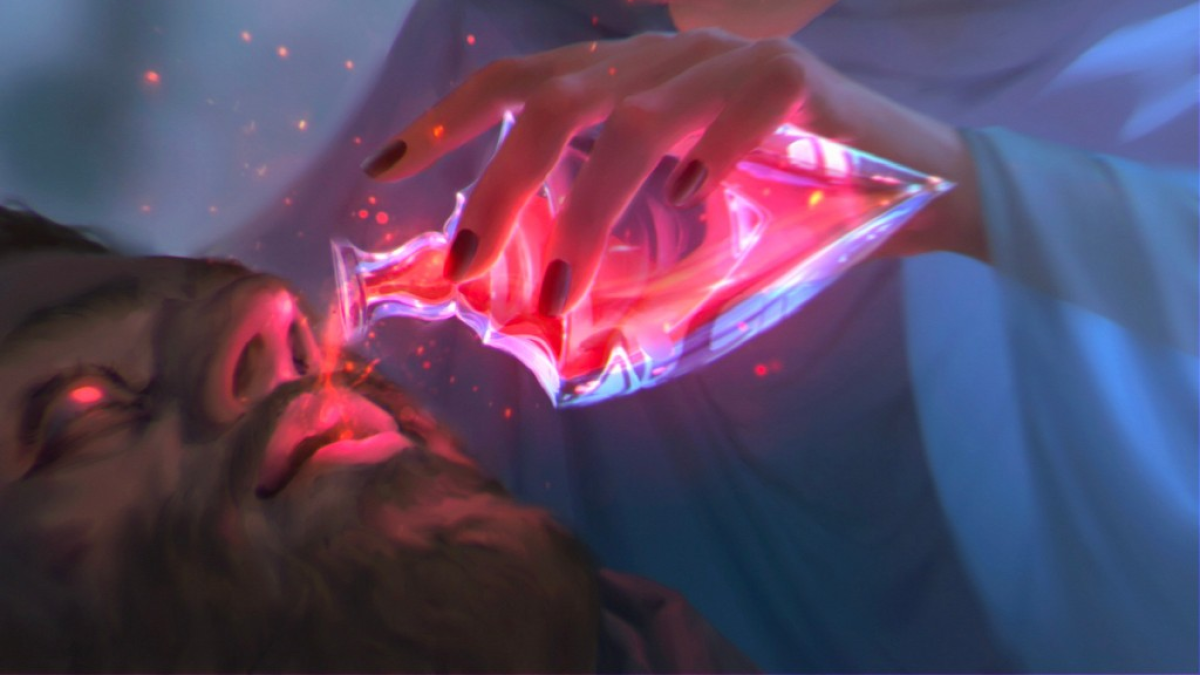

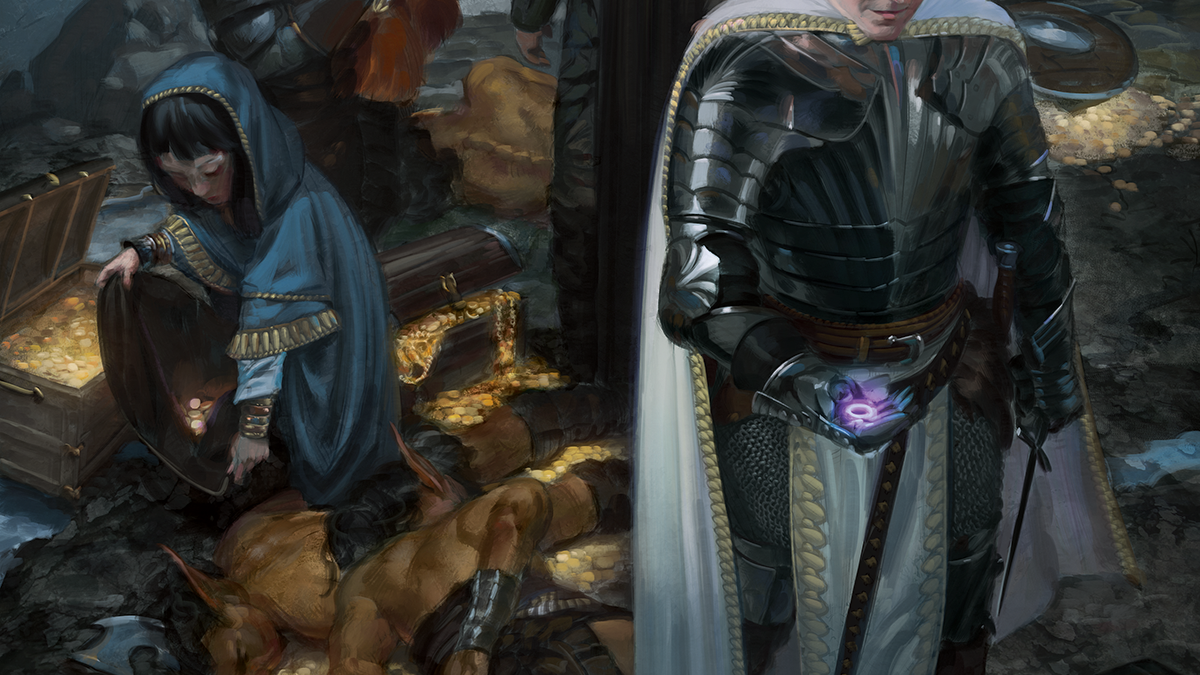

Published: Nov 5, 2023 07:09 am